Antennas at HUZ, December 2005
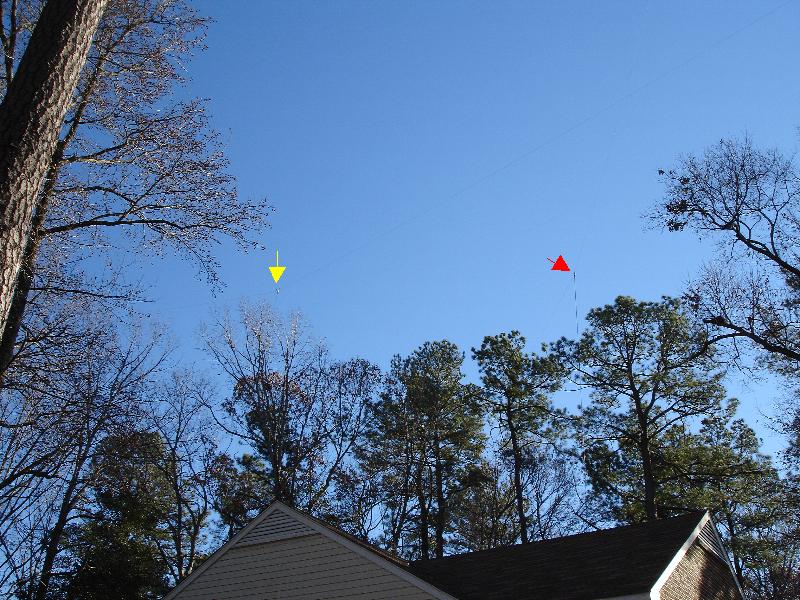
The two dipoles, 160 meter marked with yellow and the 75 meter marked with red.
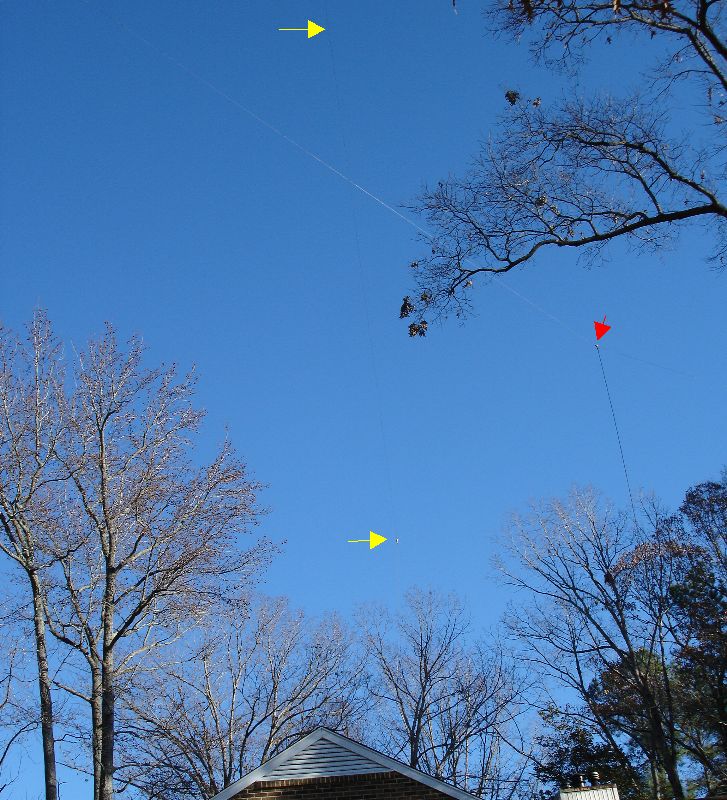
The front half of the 160 dipole is marked with yellow (lower mark is the center insulator). The leg crosses the
75 meter dipole (marked in red). The 160 wire is about 5-10 feet lower than the 75 meter dipole. The center of the
75 meter dipole is at 75-80 feet, so the 160 dipole should be around 60-70 feet.
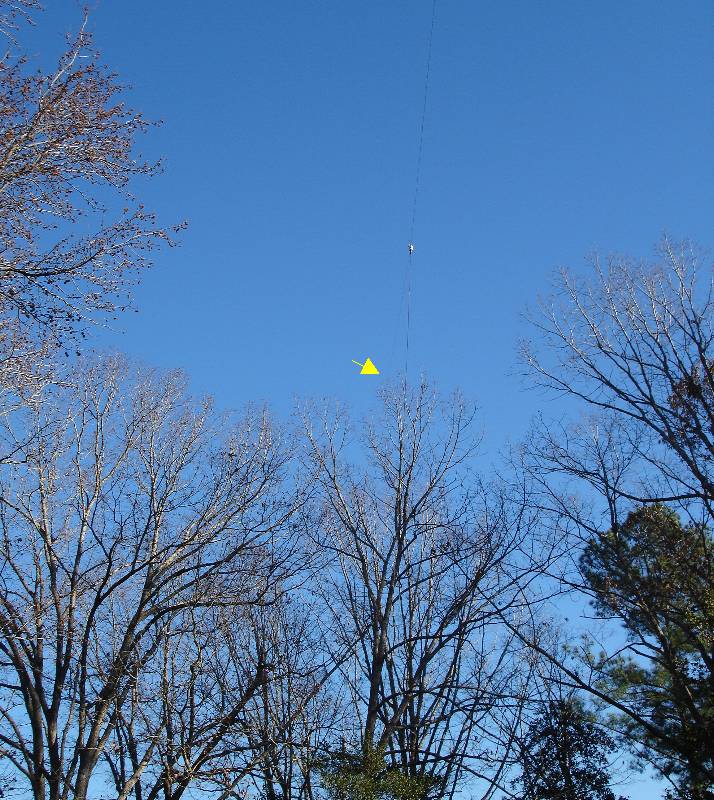
The back leg of the 160 dipole enters the trees at the yellow mark. From there it goes through two more trees, the
last one at the edge of the lake.
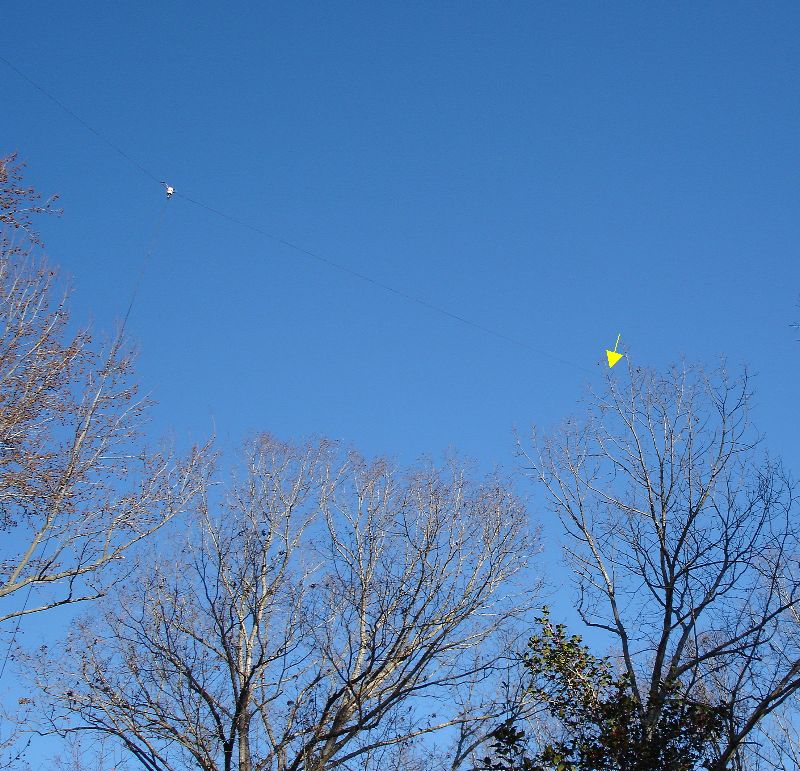
Another view of the previous from a different angle.

I used a sling shot to get the wires up in the trees. The back half of the 160 dipole needed to go over three trees. On the very
first shot with sling shot, I made it over all three trees and the
sinker (yellow marker) landed a foot or so from the edge of the lake.
Some days you get lucky!
Receiving Antenna Added December 2006
Below are some shots of the K9AY receiving loop I added in December 2006. It is switchable in four directions, NE, SW, SW, NW.
Using a fixed value of terminating resistance, 470 Ohms, it shows 15-25 dB front-to-back (FB) ratio on 80/75 meters depending
on the path, time of day, location of the station etc.
The FB ratio is even higher on 160 and the top end of the broadcast
band, approaching 25-30 dB in some cases. I've used it mostly on 75
meters and it has proven invaluable in working slopbucket DX. Often a
DX station is not even copyable on the dipole but switching to
the K9AY loop makes them Q5. Even if the station is copyable on the
dipole, the copy on the loop is much more comfortable. I was
even able to work PE1MPH and F6AKQ on AM at 3705 kHz in April! I would never have been able to copy them without the loop.
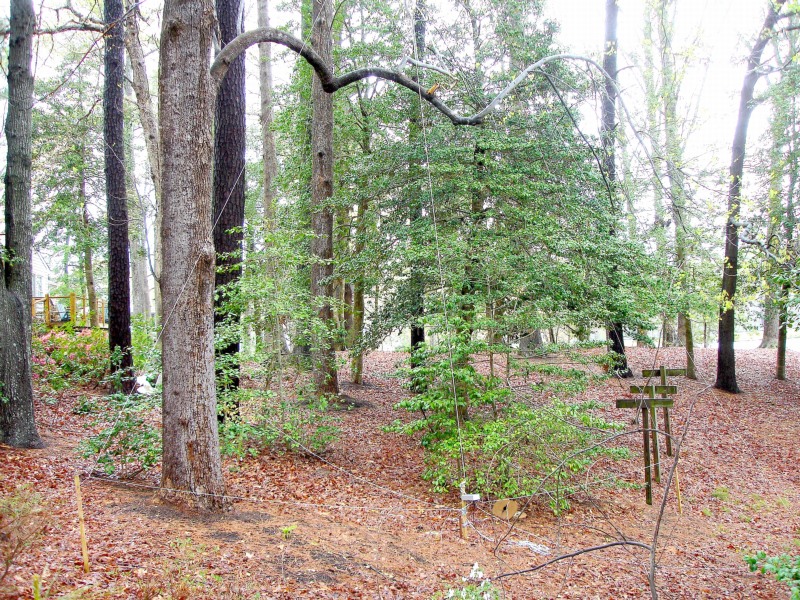
Here's a view of the loop looking north. It's basically two
triangle-shaped loops that feed a switch box. The loops are 85 feet in
total length. As configured, the tops of the loops are at about 25-30
feet above the ground. The footprint is about 15 feet on each
side of center, for a total of 30 feet. This amounts to a rather small antenna for directional receive on the low bands.
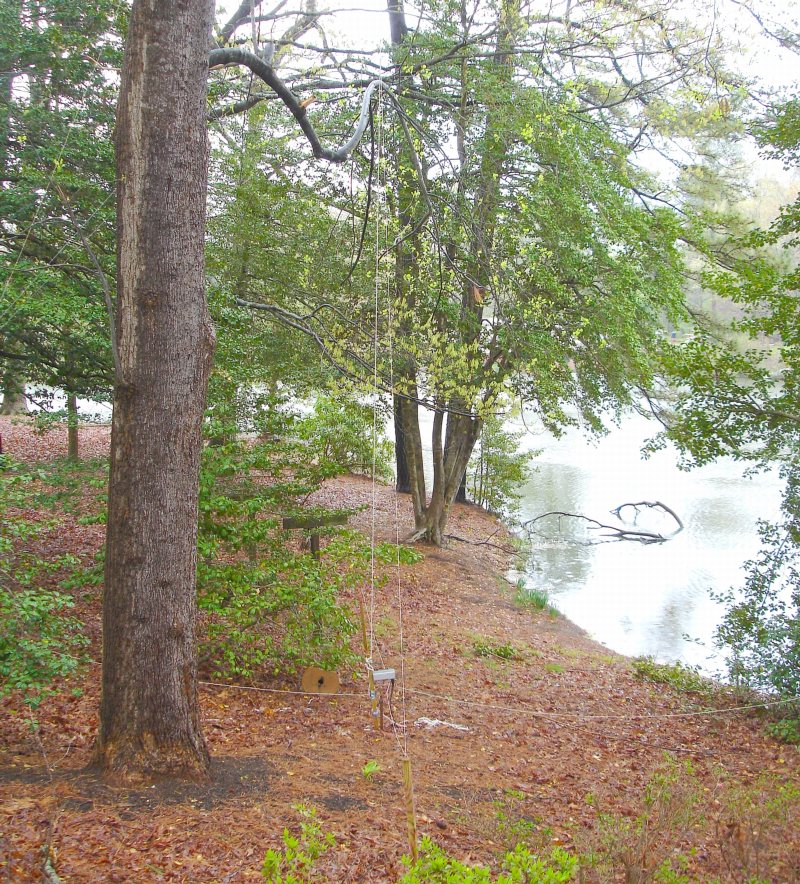
A view looking towards the Northeast, right into Europe. Switching the loop to the Northeast
often aids in the reception of some of the New England AM stations - especially if there is
QRM or QRN to the Southwest or even Southeast. On the other hand, switching to the Southwest
REALLY helps in hearing some of the West Coast AMers.
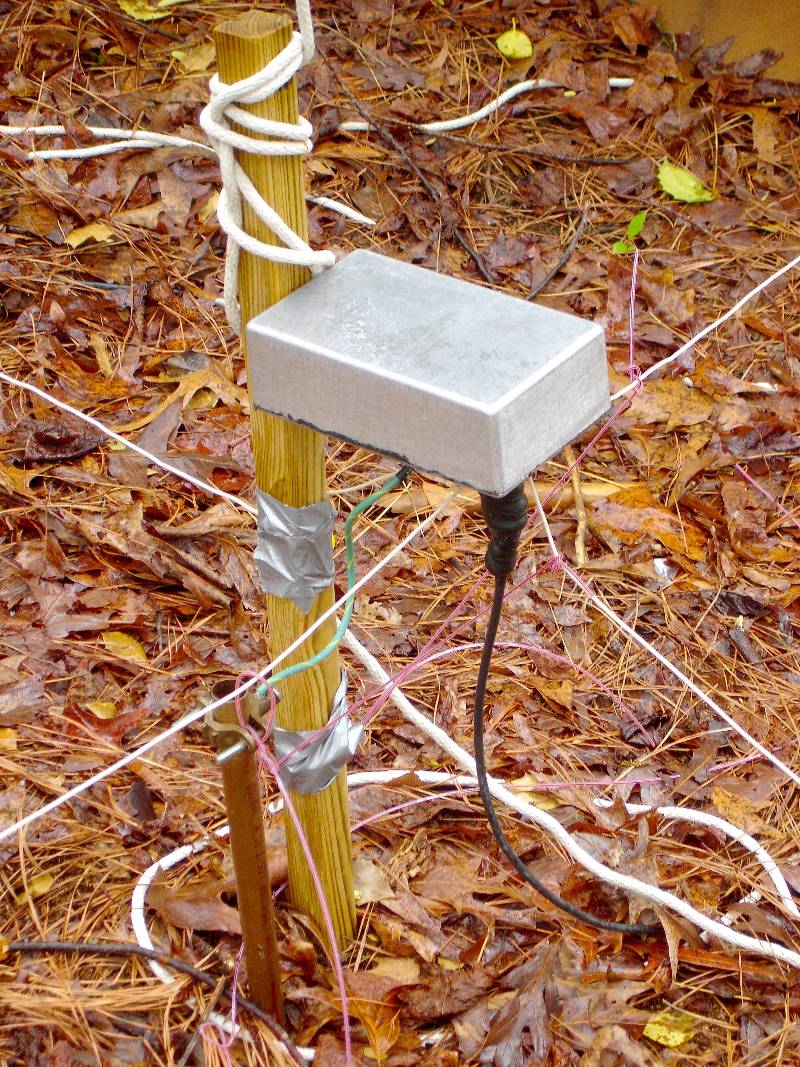
Close-up of the switch box. The box is controlled from inside the shack and allows for selection
of the four directions. It houses two relays, a matching transformer and the terminating resistor. Contol voltages
for the relay are fed down the coax.
22 April 2007







